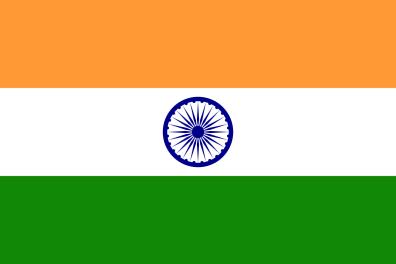Donate to Support Supercluster
Your support makes the Astronaut Database and Launch Tracker possible, and keeps all Supercluster content free.
SUPPORTSupercluster on Patreon
Your support makes the Astronaut Database and Launch Tracker possible, and keeps all Supercluster content free.
SUPPORTThis goes
to space
OneWeb
OneWeb Satellites
OneWeb's satellite constellation is designed to operate in low Earth orbit (LEO), at an altitude of approximately 1,200 kilometers (750 miles). This positioning allows the satellites to provide lower latency compared to traditional geostationary satellites, making the network more efficient for internet services. The constellation is expected to consist of around 648 operational satellites, with additional spares in orbit to ensure network reliability.
The first batch of six OneWeb satellites was launched in February 2019 aboard a Soyuz rocket from the Guiana Space Center. These initial satellites were used to test and validate the system’s performance. Following the acquisition by the UK government and Bharti Global, OneWeb resumed its launches and continued to build its constellation.
OneWeb's satellites are designed to communicate with each other through inter-satellite links, which helps maintain network connectivity even if a ground station is not immediately accessible. End users will connect to the OneWeb network via small user terminals, which can be installed in various locations, including homes, businesses, and mobile platforms like ships and airplanes.
OneWeb Company
OneWeb is a communications company founded in 2012 by Greg Wyler, with the aim of developing a constellation of low Earth orbit (LEO) satellites to provide global internet coverage, especially in underserved and remote areas. Originally called "WorldVu," the company was later rebranded as OneWeb. Wyler, leveraging his experience in satellite communications, envisioned creating a satellite network capable of delivering internet access to almost any location on Earth.
In 2015, OneWeb attracted substantial investments from major companies such as Qualcomm, Virgin Group, and Coca-Cola. These funds enabled OneWeb to move forward with its ambitious satellite development plans. The company partnered with Airbus to manufacture the satellites, with production set up in Toulouse, France. Additionally, OneWeb collaborated with launch providers like Arianespace to deploy its satellites into space.
Despite early progress, OneWeb faced financial challenges due to the high costs associated with satellite deployment. In March 2020, the company filed for Chapter 11 bankruptcy, leading to a temporary halt in its operations. However, in November 2020, the UK government and Bharti Global acquired OneWeb, allowing the company to exit bankruptcy and resume its satellite launches. By the end of 2021, OneWeb had successfully deployed over 350 satellites as part of its constellation.
Photo courtesy of OneWeb.

On this
rocket
LVM-3
The Launch Vehicle Mark 3 (LVM3), is a three-stage medium-lift launch vehicle developed by the Indian Space Research Organisation (ISRO). Primarily designed to launch communication satellites into geostationary orbit, it is also identified as the launch vehicle for crewed missions under the Indian Human Spaceflight Programme and dedicated science missions like Chandrayaan-2. The GSLV Mk III has a higher payload capacity than the similarly named GSLV Mk II.
After several delays and a sub-orbital test flight on 18 December 2014, ISRO successfully conducted the first orbital test launch of GSLV Mk III on 5 June 2017 from the Satish Dhawan Space Centre, Andhra Pradesh.
In June 2018, the Union Cabinet approved ₹43.38 billion (US$540 million) to build 10 GSLV Mk III rockets over a five-year period.
The GSLV Mk III launched CARE, India's space capsule recovery experiment module, Chandrayaan-2, India's second lunar mission, and will be used to carry Gaganyaan, the first crewed mission under Indian Human Spaceflight Programme. In October 2021, UK-based global communication satellite provider OneWeb entered into an agreement with ISRO to launch OneWeb satellites aboard the GSLV Mk III along with the PSLV.
Image: ISRO

From this
spaceport
Second Launch Pad - Satish Dhawan Space Centre, India
The Second Launch Pad (SLP) at the Satish Dhawan Space Centre (SDSC) in Sriharikota, India, is one of ISRO’s primary launch complexes. Operational since 2005, it was developed to support the growing number of satellite launches and to reduce dependence on the older First Launch Pad. The SLP is a versatile and modular facility, capable of launching all of ISRO's current rockets, including the Polar Satellite Launch Vehicle (PSLV), Geosynchronous Satellite Launch Vehicle (GSLV), and LVM3 (formerly GSLV Mk III).
Located on the eastern coast of India, the site allows for launches over the Bay of Bengal, ideal for a range of orbital inclinations. The SLP features a Mobile Service Tower (MST) and a Fixed Umbilical Tower (FUT) for vehicle integration, fueling, and payload access, enhancing launch preparation efficiency and safety. It has been used for major missions like Chandrayaan, Mars Orbiter Mission, and several NavIC satellites.
Image courtesy of ISRO.

Here's where to view OneWeb #18
Viewing Sites
- Satish Dhawan Launch Viewing Gallery
GET THE SUPERCLUSTER APP
THE SUPERCLUSTER PODCAST
A podcast exploring the amazing milestones that changed space history, the wildest ideas that drive our future, and every development in this new Golden Age of Space.
Donate to support
Your support makes the Astronaut Database and Launch Tracker possible, and keeps all Supercluster content free.
SupportCOPYRIGHT 2021 SUPERCLUSTER LLC


